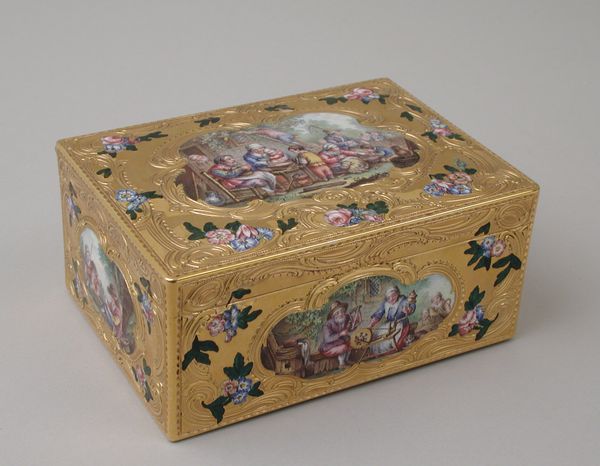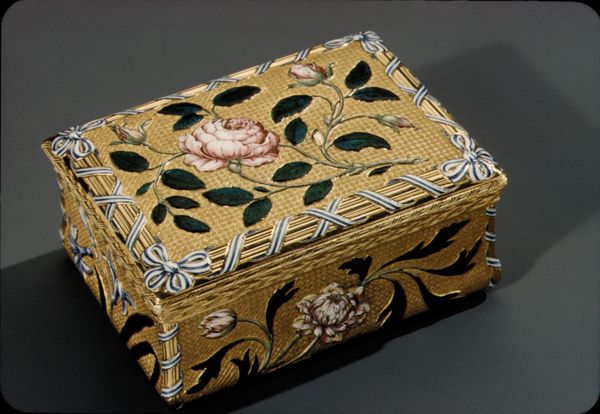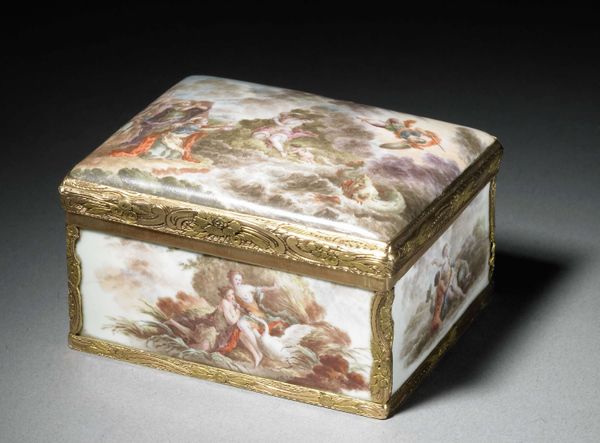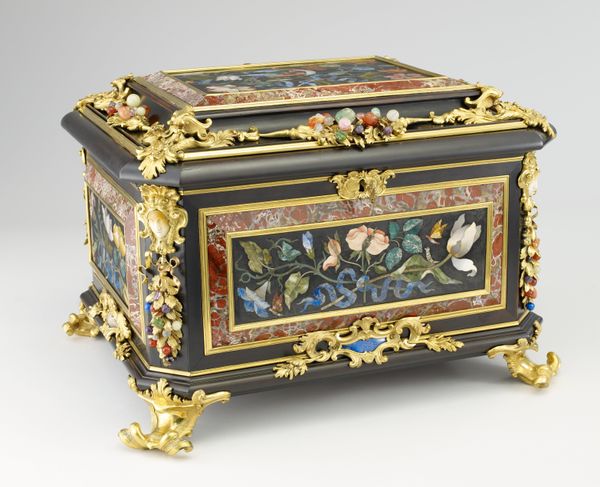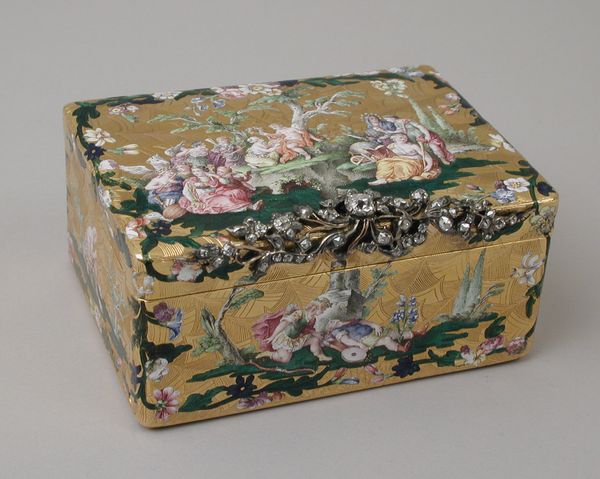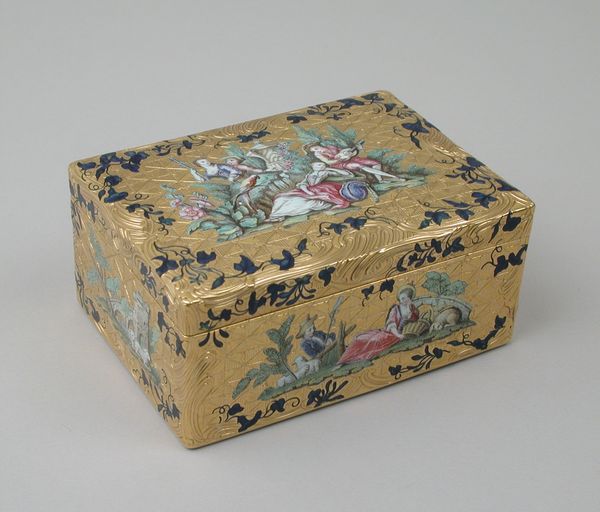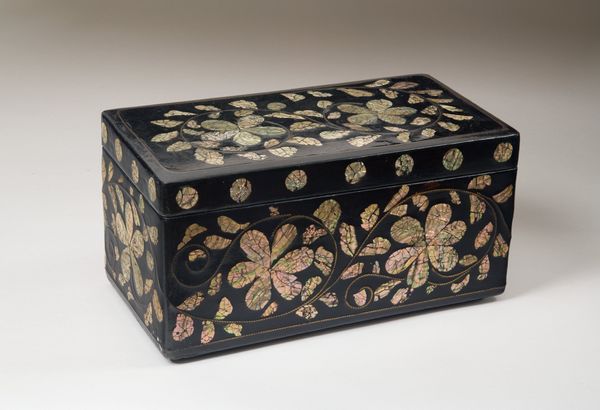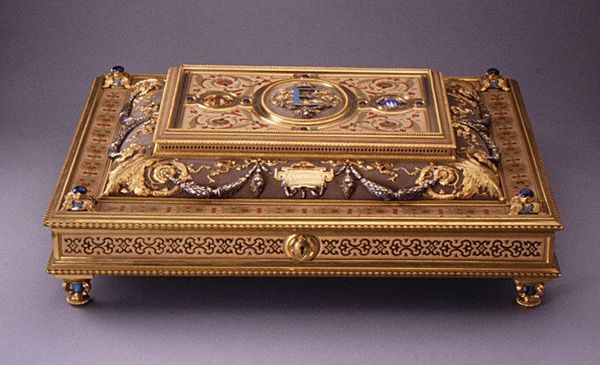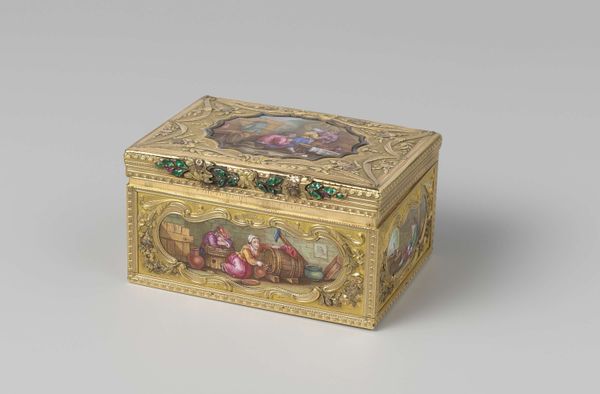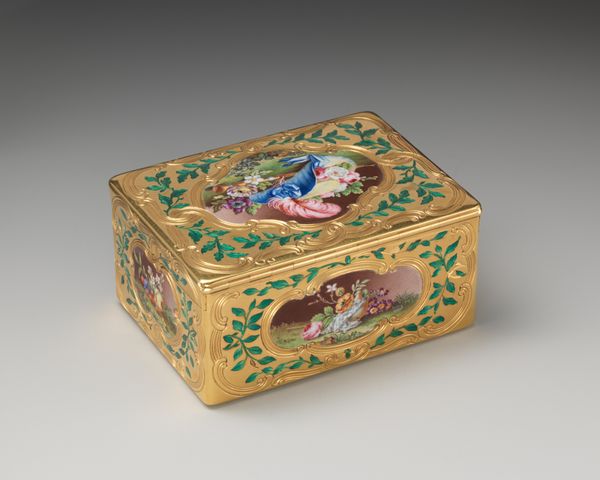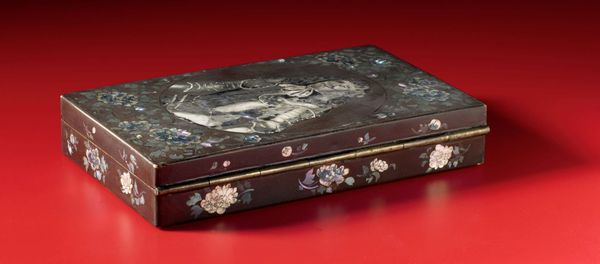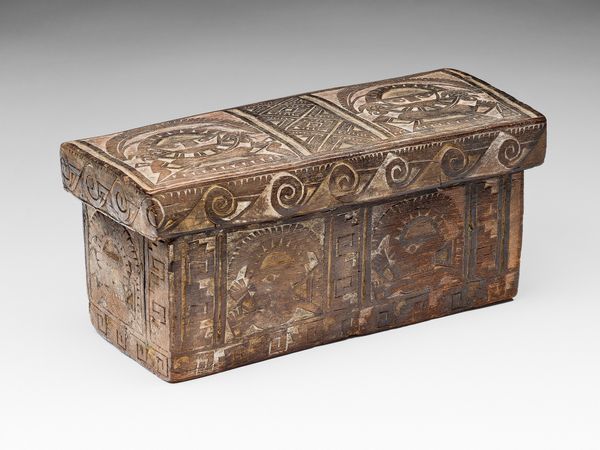
metal, gold, sculpture
#
ornate
#
natural stone pattern
#
decorative element
#
metal
#
gold
#
jewelry design
#
flower
#
sculptural image
#
intimism
#
sculpture
#
decorative-art
#
decorative art
#
rococo
Dimensions: 1 9/16 x 2 9/16 x 3 3/16 in. (4 x 6.5 x 8.1cm)
Copyright: Public Domain
Curator: This gilded Snuffbox, likely crafted between 1750 and 1775, now resides here at the Metropolitan Museum of Art. We believe Daniel Baudesson may have been involved in its creation. Editor: Wow, it's pure opulence! It makes me think of Versailles and powdered wigs. All that gold shimmering…it almost feels like it's daring you to resist touching it. Curator: The object is certainly representative of its time, echoing the decorative-art style with natural motifs favored among elite circles. Its small size also points to a kind of intimacy. In considering it through an intersectional lens, who would have had access to such a piece, and what did its ownership signify in the socio-political context of the period? Editor: Right, it's this tiny treasure chest whispering secrets about power, privilege and the pleasure of, you know, finely ground tobacco! Those iridescent flowers—are they mother-of-pearl inlaid into the gold? It is delicate work on full display. Curator: Indeed. The meticulous craftsmanship highlights not only luxury but the period’s understanding of status. It becomes crucial to examine how objects like this participate in creating and reinforcing social hierarchies, specifically around gender, race, and access. Editor: It almost feels too precious to use. More like a statement, an objet d’art…I can practically feel the weight of expectations, societal pressures, and maybe a touch of boredom that might inspire someone to reach for their ornate little Snuffbox. Does the craftsmanship itself, though refined, limit its power? Curator: Not at all. Examining the labour and resources involved sheds light on colonial extraction, linking individual "intimism" with larger global power structures. Every material choice tells a story about access, exploitation, and the era's ethics—or lack thereof. Editor: This box makes me think about the stories objects can tell and how their meaning continues to change as perspectives shift. We’ve opened it up metaphorically, you know, inviting everyone in to experience the story this thing is still, after all this time, spinning out. Curator: Yes, exactly. Bringing critical perspectives like post-colonial theory or even intersectional approaches to these objects lets us unpack historical assumptions. Now we can truly begin to confront difficult and enduring legacies of material culture.
Comments
No comments
Be the first to comment and join the conversation on the ultimate creative platform.

